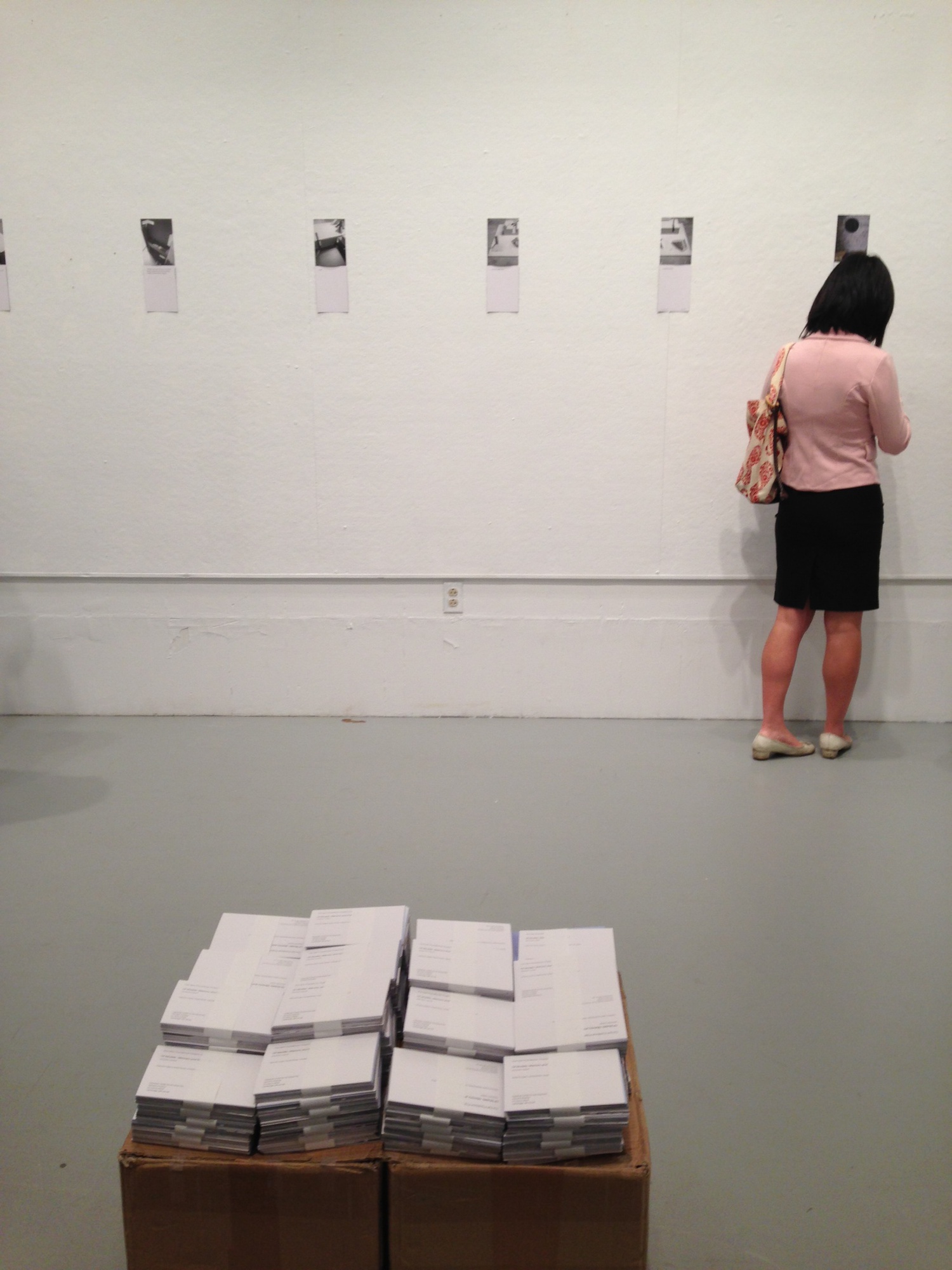
News
‘Deal with the Devil’: Harvard Medical School Faculty Grapple with Increased Industry Research Funding

News
As Dean Long’s Departure Looms, Harvard President Garber To Appoint Interim HGSE Dean

News
Harvard Students Rally in Solidarity with Pro-Palestine MIT Encampment Amid National Campus Turmoil

News
Attorneys Present Closing Arguments in Wrongful Death Trial Against CAMHS Employee

News
Harvard President Garber Declines To Rule Out Police Response To Campus Protests
Harvard Monday Gallery Reframes Art of Postcards

The familiar image of the postcard, that ultimate cliché of travel souvenirs, habitually aids us in the recollection of objects we have seen, inspected, and left behind. But in the Harvard Monday Gallery’s latest show, “Of Models, Memory, and Imagination,” the postcard itself became a medium for aesthetic scrutiny. The show, which ran Sept. 23. and Sept. 30 at 6-8 Linden Street, was the fifth exhibition put on in the Harvard Monday Gallery, an art space run by undergraduate Visual and Environmental Studies concentrators since its opening in spring 2012.
Hung along the four walls of the stark, square space was a continuous sequence of postcard-sized photos and bits of text, spaced well apart and presented in pairs. The viewer was thus surrounded by impetuses to recreate and imagine the connection between the text that prompted the photos and the photos themselves. Here was art not as destination, but rather as prompt for mental travel: these postcard art objects, though fixed in a neat sequence, by their suggestive and incomplete natures inspired acts of imagination and memory on the part of the viewer. Postcards were even available to be taken home from the show. “An emotion or essence can be derived from it, but not the whole story is there,” says Ashleigh J. Cote ’15, a VES concentrator whose work is featured in the show.
To prepare for the show, five students, including the Gallery’s principal curator Daniel R. Bredar ’14, spent just over a week quickly setting up the event with the help of VES faculty. The origins of this show date, however, from a week and a half this spring when VES visiting artist Alexandra Leykauf (from whom the name of the exhibition originally comes) gave the students a workshop on model-building. She asked each student to pick a text or story he or she liked and to build a three-dimensional model from his or her imagined conception of the architectural interiority of the text.
The exhibition developed as a by-product of the workshop. Originally, students just took photographs of the models they made to document their process and final products, but at some point they had the idea to make further artistic use of their work from the workshop. “Once we had all these postcards, it was just [a matter of] how best to display them to the public,” Cote says. “We ultimately decided that the kind of linear movement around the room would almost have a narrative sense to it, and given that they were based on texts, that just seemed very natural.” The result is a display of the process of art creation as art in itself, to be seen and contemplated as a documented succession.
Adrian Arteaga ’14, who came with his roommate to see the exhibition on its opening night, had a mixed reaction to the event. “I found some of the art hard to understand,” Arteaga says. For his taste, he says, some of the image-text pairings were challengingly abstract.
Cote was not insensible to this concern. “I have a lot of memories of making the model, so to see the photos has a lot of symbolic meaning to me,” she says. “But a lot of the pictures are very vague, and it’s uncertain how they relate to the text. [This] is fine, but sometimes that can [make it difficult for] the spectator.” On the other hand, Cote notes that this ambiguity in perceived meaning is an aspect built into the very act of viewing creations like this. “These postcards offer a glimpse of the models and also a glimpse of the text which the models were constructed from,” she says. “It has the nature of a memory, where it’s a vagueness or not a clear picture.”
Whether overly abstract or an inspiring manifestation of memory, the work that the Harvard Monday Gallery displays has the advantage of an inherent relatability for Harvard students—both the artists and the attendees are all, or nearly all, Harvard College students. “I enjoyed seeing many friendly faces,” Artega says.
The exhibition’s play between object, word, and image was extended to music as well: on the opening night of the gallery, Harvard undergraduate band L.A. Jeff played original music and ambient sounds on the small courtyard outside the gallery as students viewed the work of friends and classmates.
—Staff writer Victoria Zhuang can be reached at victoria.zhuang@thecrimson.com.
Want to keep up with breaking news? Subscribe to our email newsletter.
